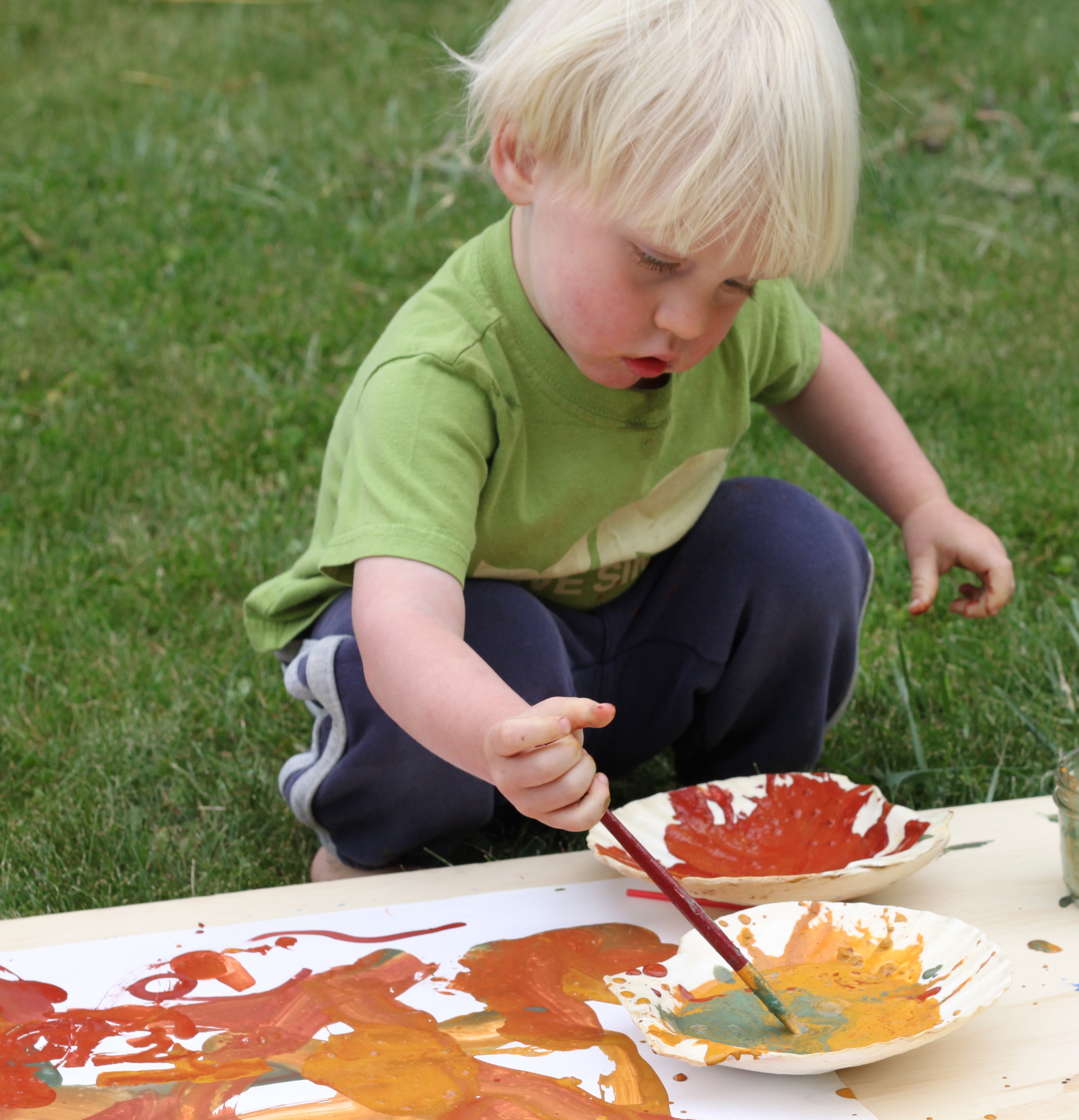Our two-part blog series, Toxin-Free Tuesday, covers the parallel stories of our social platform manager Kate and our founder Leah, whose disappointing experiences with conventional paint companies inspired their work with Natural Earth Paint. Wrapping up this short series, we hear from Leah!
Leah's Story
"As a new mom of a toddler and a health-conscious artist, I went to a local toy store to buy my son his first art supplies. Every kit said “non-toxic” on the label but when I searched the packaging, no ingredients were listed. I decided to put on my detective hat and I called the main offices of the two most popular brands on the market. To my surprise, they told me they could not tell me any ingredients in their products and that only a licensed physician can call poison control to find out. I also learned that there is no requirement that mandates art supplies manufacturers to tell customers the ingredients and that in the US, synthetic pigments that have never been tested for toxicity can be labeled 'non-toxic.'

The article on Art Supplies and Poison Control by PediatricSafety.net states that, “In 2009, the nation’s 57 poison control centers received more than 35,000 calls about toxic exposures to art products; of these, more than 26,000 calls concerned children younger than 6.”
As I continued my research I was truly shocked to discover the magnitude of this issue. According to the Children’s Health and Environmental Coalition, exposure to the toxic chemicals found in some art supplies (including paints, glues, markers, solvents, face paints and glazes) can result in problems including headaches; nausea; burns; breathing problems; lung and kidney damage; and even cancer and death. Children are particularly vulnerable to toxins because of their small size, higher metabolisms, and immature immune systems. I learned that the most common preservative in children’s “non-toxic” paint is formaldehyde and the pigments are commonly made from petrochemicals.
Further research revealed that children’s “non-toxic” face paints were far worse. This is something that is designed to go directly on a child’s skin (and then into their blood streams) but yet is completely un-regulated. The Campaign for Safe Cosmetics reported that 10 out of 10 popular face paints that they tested contained lead (a potent neurotoxin), while others contained nickel, cobalt, and chromium. Most face paints also contain synthetic, petroleum-based dyes, formaldehyde-based preservatives, parabens, animal products (carmine), and phthalates.
I found one natural children’s paint kit and face paint kit on the market at the time so I purchased a set for my son, but was greatly disappointed as the colors were pale, chunky and hard to use. As an artist myself, I knew there had to be another option.
My mission was cinched. I would create my own paints and face paints that were both high quality and also truly pure, non-toxic and natural.

Extensive research revealed the magical world of natural earth pigments. Proven to have been in constant use for at least 100,000 years, earth pigments (naturally-colored clays in the ground) make the most archival, luminous and UV resistant paints in the world – not to mention they are completely non-toxic. Throughout history they have been mixed with a variety of natural 'binders' to make different types of paint including oil, tree sap, animal fat, wax, egg yolk, milk and more. I became so excited about this idea of bringing back these ancient and non-toxic paints that by year’s end my business, Natural Earth Paint, was born.
Soon after creating the children’s paints, I developed Natural Earth Oil Paints (in the tradition of the Renaissance Masters) and other non-toxic art supplies for adult artists. Conventional artist paints are even more shockingly toxic and go down drains into our water supply and into the air we breathe at alarming rates. Even acrylic paints which most people consider to be the non-toxic option are quite the opposite. They are 100% petroleum-based (liquid plastic) with toxic pigments, additives and preservatives.
It was surprising to me that all of these toxins in art supplies are completely unnecessary and in fact you can produce higher quality paintings with natural ingredients.
My son has now grown into a budding 7 year old artist and I’m so grateful that he’s had the benefit of a non-toxic start to life. And although it’s disheartening to know that most art supplies companies don’t hold our health or our planet’s health as a priority, I’m equally inspired to see more natural and non-toxic options springing up each year including fruit and veggie based art supplies.
My main advice to parents and artists today would be to read the labels or find out the ingredients of your art supplies and face paints, just as you read the labels on your food. Because when paints touch the skin or are inhaled, they go directly into the body, just as food does. And when you see 'non-toxic' on any art supplies, it doesn’t mean that it won’t make you or your child sick, it just means that it won’t poison you immediately.

By re-connecting to the true source of our creative materials and the Earth (literally) we can find peace and re-assurance in creating in harmony with nature and we can breathe easier watching our children let their creative juices flow while splattered in paint and filled with joy."
Interested in more Earth artists who use Natural Earth Paint? Visit our Eco Artists page!
Follow us on Instagram, Facebook, and Pinterest for more natural inspiration.





